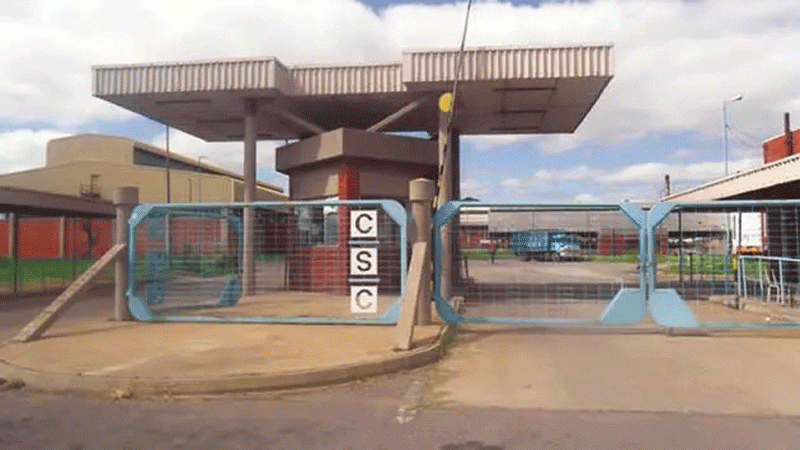
REGIONAL smuggling cartels have flooded Zimbabwe with cement, triggering fears consumers will opt for the cheaper foreign products, depriving local manufacturers of revenues.
The country’s three cement makers - Khaya Cement, PPC Zimbabwe and Sino Zimbabwe - are already producing outputs higher than what the market requires.
In the past year, they convinced government to block cement imports to protect their businesses.
High production costs in Zimbabwe, which is battling to tame an inflationary surge and currency volatilities, have forced consumers to turn to smuggled products, which land on the domestic market way cheaper, from countries like Zambia.
An investigation by the Zimbabwe Independent revealed that the local market has been swamped by brands from Lafarge in Zambia, and Surecast based in South Africa.
Lafarge exited Zimbabwe last year after its assets were taken over by domestic investors in a multimillion-dollar deal.
It has since been rebranded it to Khaya Cement.
According to market sources, the cement is being brought illegally into Zimbabwe by cartels, who purchase the products and transport them through illicit means.
- Zim headed for a political dead heat in 2023
- Record breaker Mpofu revisits difficult upbringing
- Tendo Electronics eyes Africa after TelOne deal
- Record breaker Mpofu revisits difficult upbringing
Keep Reading
Regional producers are also holding excess stock.
Smuggling cartels have realised this, and they have been purchasing from these companies to push cement into Zimbabwe, where prices are high.
In April this year, the government gazetted import substitution regulations, Statutory Instrument 89 of 2021, which regulates and controls the importation of cement into the country.
This was after indications showed that cheaper imports were pushing local producers to the brink, as consumers turned to the imports.
The Independent was also informed that the country was losing millions in potential tax revenue as a result of smuggling.
A prominent cement dealer in Harare, who requested anonymity, said most traders were demanding foreign currency.
“Cement traders only accept US dollar transactions,” the trader said.
“This money is then illicitly moved out of Zimbabwe’s borders. This means the country is losing millions in potential revenue.
“By smuggling from South Africa, the traders avoid paying a surcharge tax of US$100 per tonne.
“The other issue is around the local cost of production where smuggled cement is cheaper compared to the locally produced product,” the trader added.
Industry and Commerce Permanent Secretary Mavis Sibanda queried how the cement was landing in Zimbabwe after the import ban.
“All cement imports were stopped during the first quarter of this year and only one player was still importing for legal reasons. I am sure that player has since stopped. Anyone who is still importing cement could be smuggling,” Sibanda said.
“Remember cement is heavy. The question is, how are those people passing through the borders. I am sure you can also get a comment from the Zimbabwe Revenue Authority.”
Zimbabwe’s cement producers have been pushing the government to impose tariffs on imports, including from Nigeria’s Dangote Cement, saying this would prevent the collapse of the local industry and save jobs.
The country’s three major cement manufacturers have a combined milling capacity of slightly over three million tonnes a year.
In emailed responses to the Independent, PPC confirmed that current output was way above market requirements.
It said there was no need for the country to import cement.
"Zimbabwe is blessed with production capacity in a number of sectors, covering industrial sectors, agriculture, finance, technology and construction.” PPC said.
“The cement producers in the country have a milling capacity of slightly over three million tonnes of cement per annum, while demand remains below two million tonnes per annum.
"This creates a challenge of low-capacity utilisation and high fixed costs. It is clear the country does not need to import cement to meet demand.
“The main drivers for cement imports are purely based on greed at the expense of economic growth. There is a need to support local producers in order to grow and stabilise our economy," it said.
Khaya Cement referred questions to the Ministry of Industry and Commerce.
According to experts, Zimbabwe’s use of the USD has also turned it into an attractive market for regional countries with weakening currencies.
But a strong dollar, coupled with high labour, electricity, fuel, and transport costs, has made Zimbabwe’s cement more expensive than imports from neighouring countries.
Zimbabwe’s cement market has been growing at an annual rate of 2% to 3%.
In South Africa and Zambia, the price of a 50kg bag of cement is around US$6, while in Zimbabwe it is selling at up to US$12.










